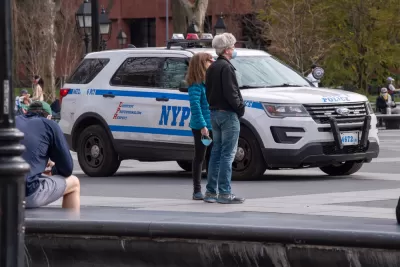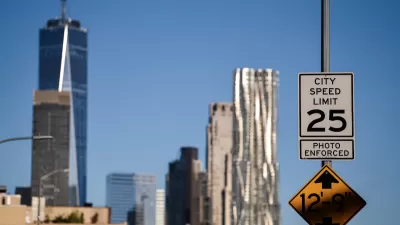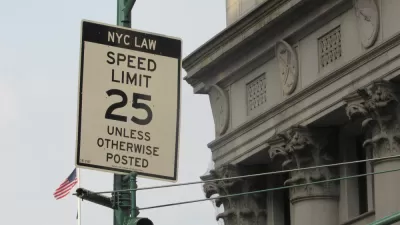With so few cars on the road, cars and buses are moving faster in New York City. Some drivers are going too fast, though.

Winnie Hu reports:
Traffic at New York City’s busiest bridges and tunnels has plunged nearly 60 percent.
Rush-hour speeds have soared 288 percent on one of the city’s most clogged arteries — the Brooklyn-Queens Expressway — to 52 miles per hour from 13 m.p.h.
According to Hu, the difference on New York City streets during coronavirus stay-at-home orders can also be measured in terms of bus speeds: "The average weekday bus speed rose 7 percent to 8.7 miles per hour from 8.1 miles per hour before the outbreak, according to the transportation authority."
While Hu applies the lessons of New York's current lack of traffic to inform the discussion about the congestion pricing plan proposed for parts of Manhattan, other media observers in the city are using the new conditions to raise awareness about traffic safety enforcement.
Gersh Kuntzman has been providing regular updates on the city's "speeding epidemic," including an article from April 5 reporting a 12 percent increase in speed violations issued by the city's speed cameras. "The 12-plus-percent increase in tickets come as the total number of vehicle miles traveled in the five boroughs is down by 71 percent from that same January baseline, according to data from StreetLight." Kuntzman documented some of the speeding in a video shared on Vimeo.
They're Speeding! from Gersh on Vimeo.
A follow up article by Kuntzman from April 8 notes that New York Police Department officers wrote fewer speeding tickets in March, even as the city's cameras catch more violators: "In March, NYPD officers wrote 346 speeding tickets per day, down 36 percent since January. By comparison, speed cameras caught 13,533 scofflaws on the average day in March, up 20 percent from the January average."
FULL STORY: N.Y.’s Changed Streets: In One Spot, Traffic Speeds Are Up 288%

Alabama: Trump Terminates Settlements for Black Communities Harmed By Raw Sewage
Trump deemed the landmark civil rights agreement “illegal DEI and environmental justice policy.”

Planetizen Federal Action Tracker
A weekly monitor of how Trump’s orders and actions are impacting planners and planning in America.

The 120 Year Old Tiny Home Villages That Sheltered San Francisco’s Earthquake Refugees
More than a century ago, San Francisco mobilized to house thousands of residents displaced by the 1906 earthquake. Could their strategy offer a model for the present?

In Both Crashes and Crime, Public Transportation is Far Safer than Driving
Contrary to popular assumptions, public transportation has far lower crash and crime rates than automobile travel. For safer communities, improve and encourage transit travel.

Report: Zoning Reforms Should Complement Nashville’s Ambitious Transit Plan
Without reform, restrictive zoning codes will limit the impact of the city’s planned transit expansion and could exclude some of the residents who depend on transit the most.

Judge Orders Release of Frozen IRA, IIJA Funding
The decision is a victory for environmental groups who charged that freezing funds for critical infrastructure and disaster response programs caused “real and irreparable harm” to communities.
Urban Design for Planners 1: Software Tools
This six-course series explores essential urban design concepts using open source software and equips planners with the tools they need to participate fully in the urban design process.
Planning for Universal Design
Learn the tools for implementing Universal Design in planning regulations.
Clanton & Associates, Inc.
Jessamine County Fiscal Court
Institute for Housing and Urban Development Studies (IHS)
City of Grandview
Harvard GSD Executive Education
Toledo-Lucas County Plan Commissions
Salt Lake City
NYU Wagner Graduate School of Public Service





























